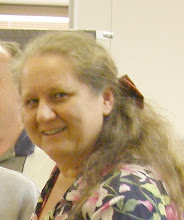As usual, the newspapers are no doubt publishing their annual story on "how a family of 23 can't go to the Ekka for less than the national debt" illustrated with a photo of a family struggling to carry 5000 show bags each.
But frankly for $20 admission (adults), I get my money's worth every year. Just the woodchop alone is worth it.
Every 10 minutes you can get to see the most unathletic-looking men (wiry old blokes, weedy young blokes, had-way-too-many-pies-and-beer blokes) chop into logs as if they were made of butter.
This is a sport where the veteran class is 60 years and over and most of them are still competing in open class.
This is a sport where you can see a man bouncing on pole shoved into the side of a simulated tree metres above the ground swinging an axe wildly at the top of the "tree"; you don't see a sense of balance like that very often.
This is a sport where handicapping is done to the finest of arts with almost all competitors finishing within seconds of one another, with many events going to a photo finish.
This is a sport where everyone wishes each other good luck (and seems to mean it) and nobody argues with the umpire.
This is a sport where the Dunlop Volley still seems to be the athletic footwear of choice. Nary a Nike to be seen.
This is a sport where there are no tarted-up sheilas presenting the winners with a bunch of flowers (a la Tour de France), but middle-aged men presenting a sash (which appear to be identical to those used in the horse events and the fruit cake cooking championships) with a manly handshake.
This is the sport where you get to spend your lifetime cheering for the Dingles, a Queensland family which has spawned (or perhaps hewned) one generation of woodchop champions after another. They certainly breed them tough in the Queensland bush.
And despite my many years of attendance at the Ekka and the wood chop, you learn a new thing every time. Did you know that competitive woodchoppers don't use ordinary axes, but special "racing axes"?
I notice that Sports Memorabilia stores never seem to have any woodchop memorabilia. I'd rather have a framed Qld maroon woodchop singlet over a pair of red-rubbed cricket pants any day.


